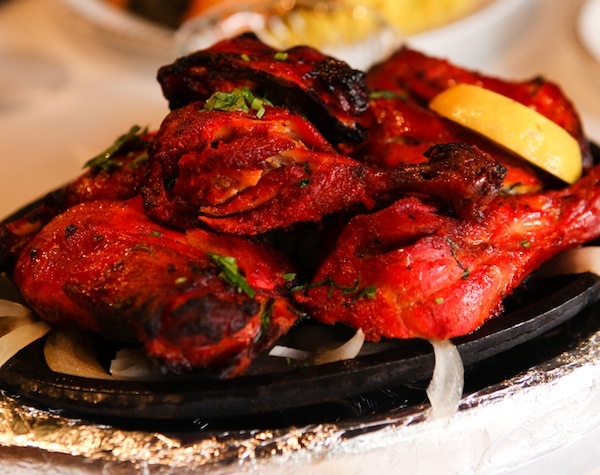
Most people know of tandoori chicken, those skewers of bright-red marinated meat whose spicy scent wafts through many Indian restaurants. But fewer are familiar with the place from whence it came. That would be the tandoor—a cylindrical, charcoal-burning clay oven with a design that dates back thousands of years. To learn more, we talked to Kamal Chhabria, the owner and manager of Raj Darbar, a Michelin Guide Bib Gourmand recipient in Chicago.

It’s basically a pot. A pot full of fire.
As befits its ancient roots, the tandoor is fully manual: “There’s no temperature control switch where you turn it on and off,” Chhabria said. Once the charcoal at the bottom of the 1- to 2-foot-wide interior is lit, the tandoor takes around 30–45 minutes to heat to full temperature. While many dishes cook at 400–500 degrees, the tandoor can reach as high as 800 degrees.
Cooking with it takes finesse.
“You can easily burn the chicken” in the tandoor’s heat, Chhabria said. It takes an experienced chef to know how to keep the meat tender. And once a restaurant owner finds a capable chef, he holds on: “I’ve had one restaurant and I’ve had one tandoor and I’ve had one chef,” Chhabria said. “He has not quit me and I have not quit him.”
Flavorful smoke equals intense flavor.
As juices drip off the roasting meats, they get absorbed by the charcoal beneath, which then gives off an intense, flavorful smoke that infuses the food. “Because there’s a narrow opening at the top … the flavors don’t escape,” said Chhabria. “It’s like a barbecue [smoker].”
Even its walls cook things.
Naan bread, that staple of Indian cuisine, is cooked inside the tandoor—but not on a skewer. Since there’s not much horizontal surface area, cooks just slap the dough onto the tandoor’s interior walls, where it sticks throughout cooking.

A chef adds naan to the tandoor at Dhoom Indian Restaurant in Seacaucus, New Jersey.
It’s more of a northern Indian thing.
“There’s a joke that northern Indians eat bread, which is grown in the south, and southern Indians eat rice, which is grown in the north,” Chhabria said. Many northern Indian households have a tandoor in the backyard so they can bake fresh naan every day. Talk about living the dream.
Get the low-down on other interesting cuisines:
 |  |
| Six Reasons to Try Korean Barbecue | An Encyclopedia of German Sausages |






